Main menu
Common skin conditions

NEWS
Join DermNet PRO
Read more
Quick links
Author: Louise Cox Thomsen, Medical Student, University of Dundee, Scotland, UK. Medical Editor: Dr Helen Gordon, Auckland, New Zealand. DermNet Editor in Chief: Adjunct A/Prof Amanda Oakley, Dermatologist, Hamilton, New Zealand. Copy edited by Gus Mitchell. September 2020.
Introduction
Causes
Complications
Skin problem causes
Cutaneous features
Skin conditions affected
Challenges
Management
Obesity is a chronic disease, defined as having a body mass index (BMI) over 30 kg/m2. It is an increasing concern in healthcare across the world.
The calculation of BMI considers both height and weight. Morbid obesity is a BMI over 40 kg/m2 or a BMI over 35 kg/m2 with an obesity-related health condition such as diabetes, hypertension, or sleep apnea. A patient can also be considered morbidly obese if they weigh more than 100 pounds (45 kilograms) over their ideal body weight. BMI is not always an accurate measure of obesity, especially if unusually tall or short. And muscle weighs more than fat.
The cause of obesity is complex. It is a heritable trait influenced by the environment, genetics, and metabolism.
Obesity impacts physical and mental health. Obesity is a risk factor for conditions such as:
Changes in the physiology of the skin in obesity include:
Mechanical factors affecting the skin relating to obesity include:
Other skin conditions are related to hyperinsulinaemia in the metabolic syndrome.
Skin conditions that can appear as a result of obesity can include the following.
Acanthosis nigricans is characterised by symmetrical, hyperpigmented, and hyperkeratotic velvety plaques in the axillae, groin, and posterior neck.
Acanthosis nigricans is associated with insulin resistance. Insulin binds to insulin growth factor (IGF) receptors on the keratinocytes and fibroblasts leading to an increase in skin thickness.
Striae distensae (stretch marks) are linear atrophic plaques. They follow physical mechanical stretching of the skin when weight is gained.
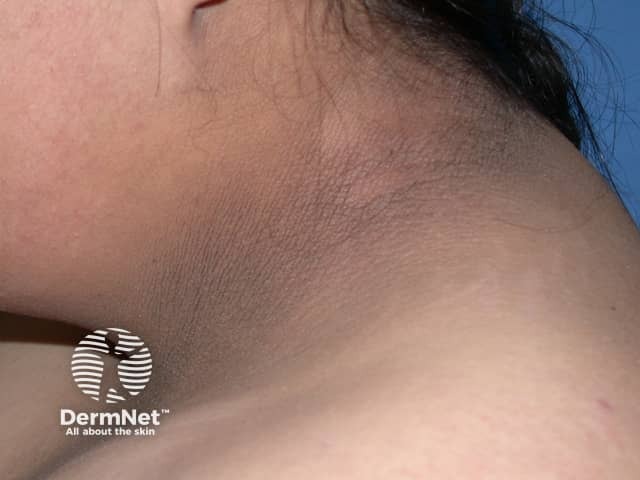
Acanthosis nigricans

Stretch marks (striae)
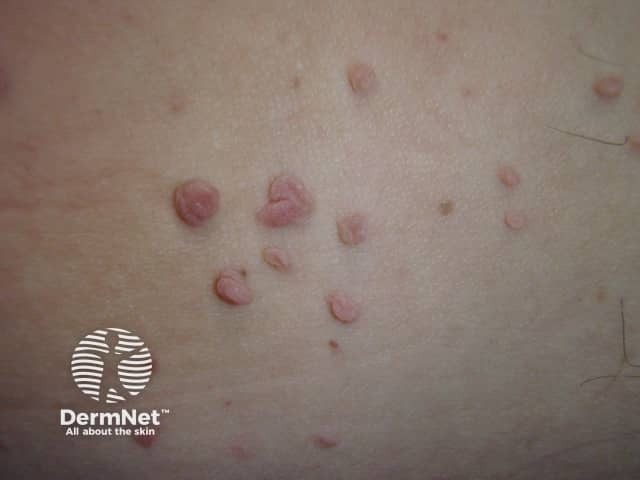
Skin tags
Skin tags (acrocordons) are associated with hyperinsulinaemia, and chaffing or rubbing of the skin.
Hirsutism is a male distribution pattern of hair, such as a beard, in a female.
The tendency to hirsutism is inherited and it is exacerbated by the hyperandrogenism produced by fatty tissues. The amount of abnormal facial hair positively correlates with increasing BMI.
Dercum disease most often occurs in obese, postmenopausal women. It is characterised by multiple painful lipomas and bruising without obvious trauma.
Patients with Dercum disease are 50% or more above their ideal weight and pain increases with BMI.
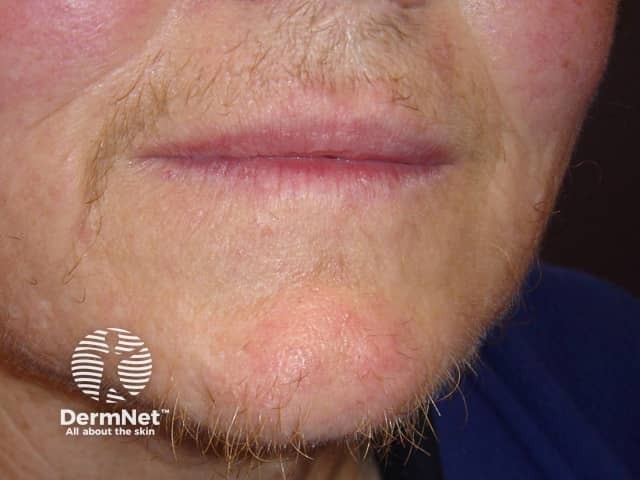
Facial hirsutism
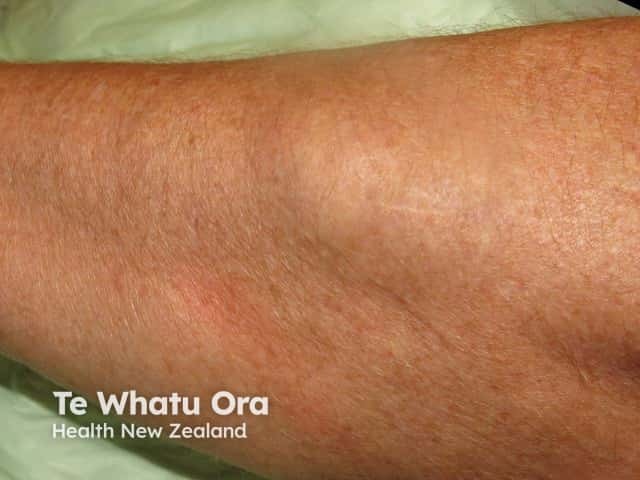
Painful lipomas
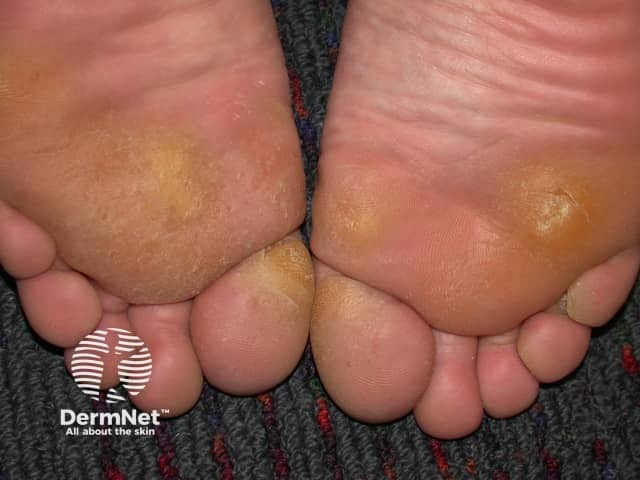
Acquired plantar keratoderma
Plantar hyperkeratosis is a form of acquired keratoderma with thickened skin over the heels and metatarsal heads.
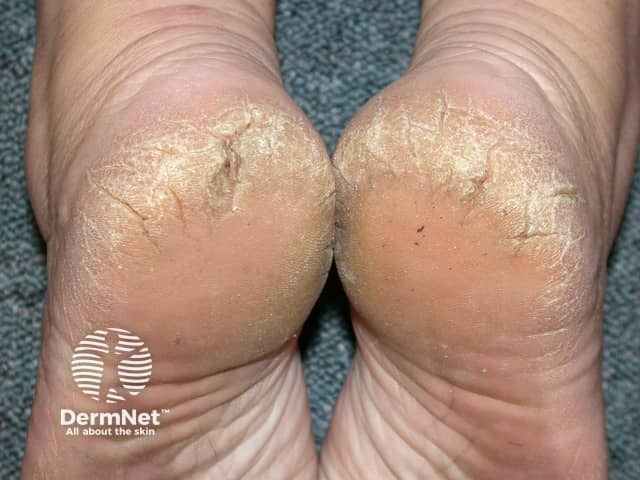
Cracked heels
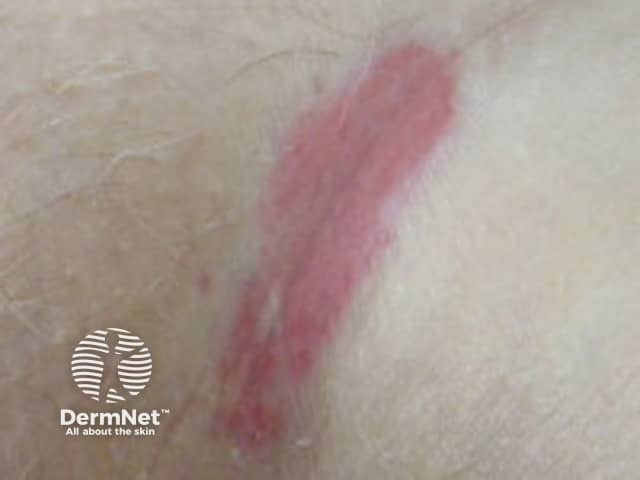
Flexural psoriasis in the groin
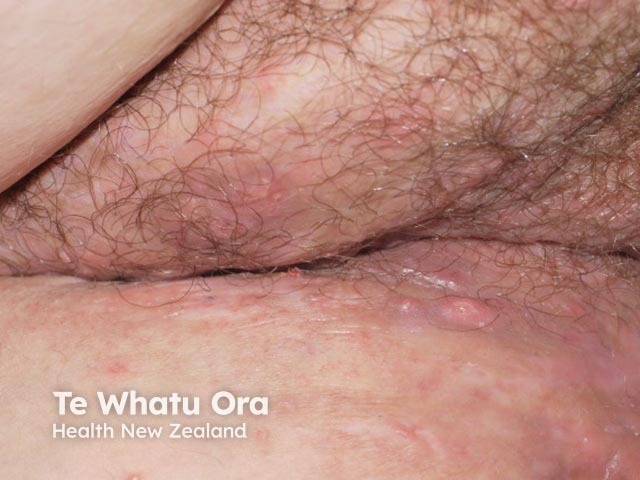
Hidradenitis suppurativa in the groin
Skin conditions may be exacerbated by obesity and can include the following.
Psoriasis is a common chronic inflammatory skin condition. Compared to people of normal weight:
Obesity may cause psoriasis through adipocyte pro-inflammatory cytokines and growth factors associated with insulin resistance-inducing growth factors.
Hidradenitis suppurativa is a chronic inflammatory condition aggravated by obesity and characterised by scarring, abscesses, and fistulas in the axillae and groin.
The relationship to obesity probably relates to androgens, IGF, and chaffing.
Cellulite describes a normal age-related skin dimpling over the thighs, buttocks, and abdomen of women due to weak connective tissue around fat lobules. Cellulite is present in non-obese patients but is more obvious in obesity.
Lymphoedema presents as a soft pitting swelling of the lower legs or arms. Bacterial infection leads to scarring and further lymphoedema. It can progress to elephantiasis nostras verrucosa.
Intertrigo presents as macerated erythema in skin folds.
Obesity results in a larger skin surface in the skin folds, which can lead to increased sweating. Relatively more alkaline skin than is present in non-obese patients increases the risk of infections.
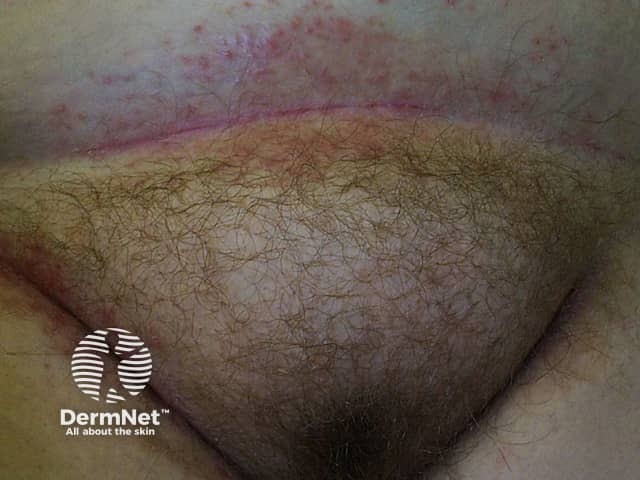
Intertrigo under the tummy fold
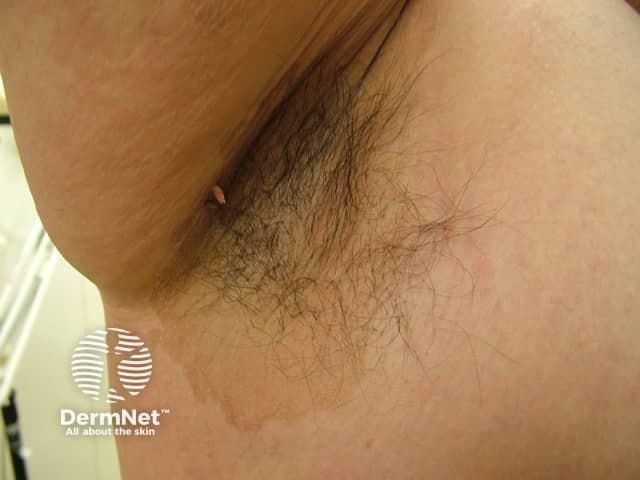
Erythrasma, axilla
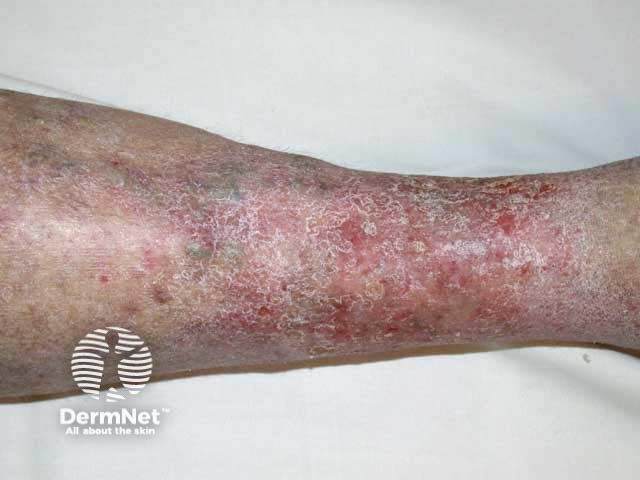
Venous eczema, lower leg
Chronic venous insufficiency leads to the pooling of blood in the veins of the lower legs with gravity.
Skin problems in an obese patient can be difficult to manage for a variety of reasons.
Specific treatments can also be challenging due to patient size. For example, during phototherapy, the patient’s skin is closer to the ultraviolet bulbs than is the case for non-obese patients resulting in an increased risk of burning.
Managing obesity requires a lot of strength and self-motivation. The most important strategy is a change in lifestyle with both dietary changes and physical activity.
Bariatric surgery may be offered to well-motivated patients with a BMI greater than 40 kg/m2 to assist in weight loss.